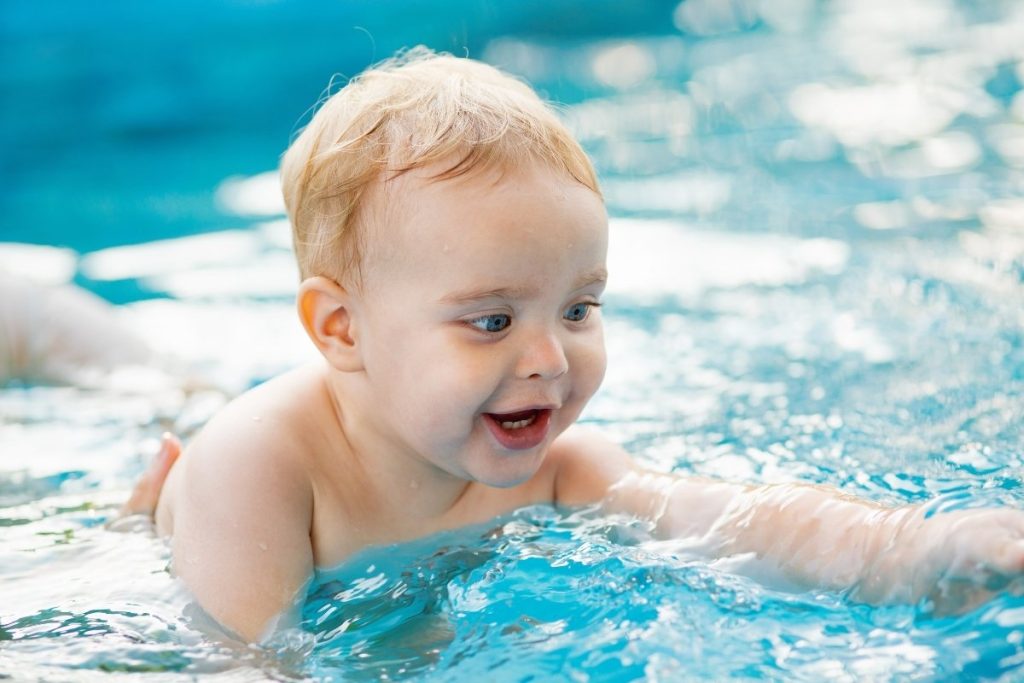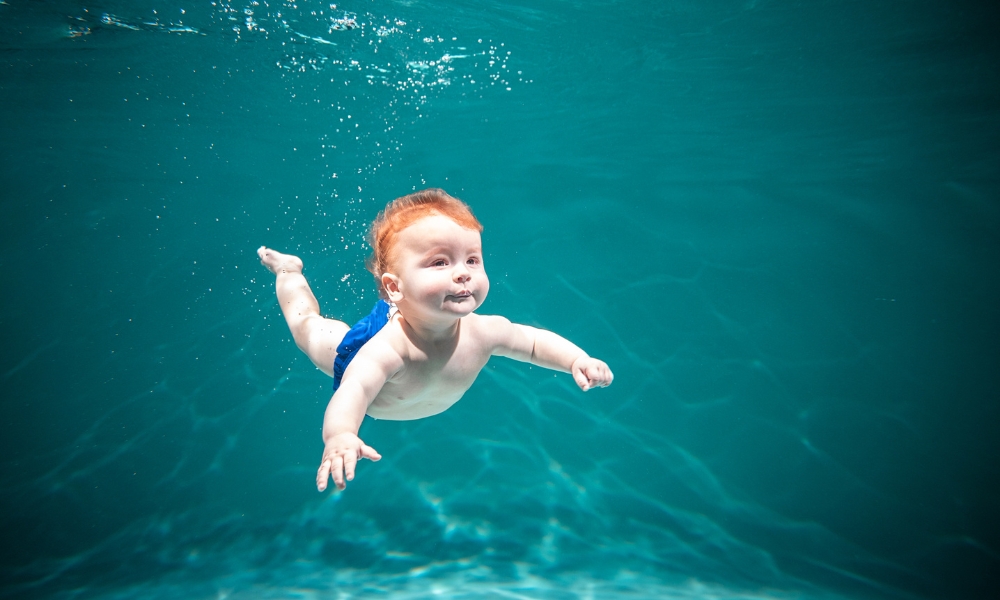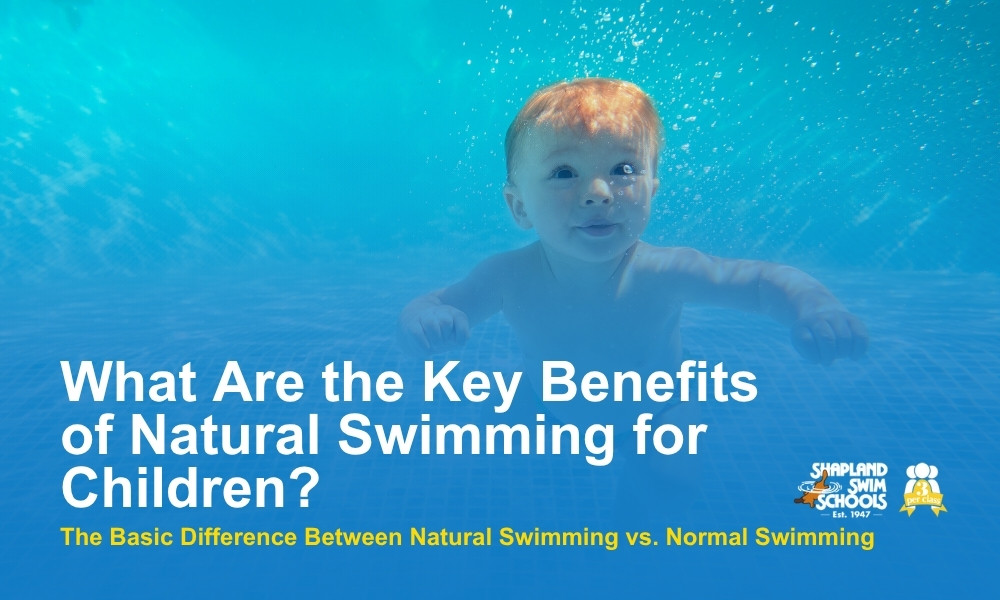Natural swimming offers children a gentle, holistic way to grow strong, confident, and happy in the water.
Unlike structured swim drills or heavily aided sessions, swimming in natural environments nurtures a child’s instinctive comfort and movement in water. From better coordination to a stronger cardiovascular system, early water immersion in natural conditions lays the foundation for both physical and emotional development.
At Shapland Swim Schools, our approach reflects these natural swimming principles-focusing on trust, safety, and confidence in every lesson.
What’s the Basic Difference Between Natural Swimming and Normal Swimming?
Normal swimming often relies on aids like floats or goggles to help children feel secure. While these tools serve a purpose, they may limit a child’s natural responses in the water.
In contrast, natural swimming encourages children to move freely without artificial assistance. This builds real water confidence and instinctive awareness.
At Shapland, our hands-on philosophy supports this approach through semi-private lessons where children are gently guided to develop true swimming skills-without goggles or floatation devices.

How Can Children Swim Naturally?
Children are not born knowing how to swim with strokes and breathing techniques, but they are born with natural aquatic instincts. Known as the bradycardic response, this reflex appears during early development in the womb and remains active for the first six months of life. With the right support, these instincts can be nurtured safely and turned into water confidence over time.
Here are the key ways natural abilities support swimming and how to build on them:
- Following Instinctive Reflexes: When introduced to water gently and early, babies naturally hold their breath and move calmly underwater.
- Starting Early: Give children as young as five months an early start, which can help them connect water with fun and safety.
- Learning through movement and body control: Let them move in water with gentle exposure that helps them balance, kick, and move their arms without needing to be taught right away.
- Building routine comfort: Consistency helps develop water memory and comfort, making children feel safe and familiar in aquatic environments.
- Encouraging playful practice at home: Bath time can become a fun and safe way to encourage splashing, floating, and movement.
- Growing naturally with the Shapland technique: Our no-floats, no-goggles method aligns with natural swimming philosophies, helping children build real skills that last a lifetime.
Key Benefits of Natural Swimming for Children
Natural swimming supports both emotional and physical development. Here are the key benefits:
- Water safety awareness: When children experience real water movement – buoyancy, resistance, and balance – they learn to stay oriented and calm in changing conditions. This genuine awareness forms the foundation of water safety. Children learn to respond to real water situations calmly and with awareness.
- Familiarity with water (drowning prevention): Early, gentle exposure reduces fear and increases confidence.
- Improved physical coordination and control: Swimming naturally engages every major muscle group while improving balance and motor control. Unlike structured drills, natural swimming encourages full-body movement that supports healthy posture and strength Builds strength, coordination, and motor skills.
- Sensory stimulation: Water movement helps with brain development and sensory integration.
- Bonding opportunity: When parents participate calmly and consistently, children build trust both in their caregivers and in the water itself. This emotional security is the foundation for independent swimming later on.
- Confidence and comfort: Natural swimming builds a sense of accomplishment and trust in their own abilities.
- Early independence: As comfort and skill increase, children naturally begin to move, float, and propel themselves with control – leading to safe, self-reliant swimming as they grow. Lays the foundation for confident, safe, independent swimming.

Read more: How Swimming Supports Your Baby’s Overall Development
Key Things Parents Should Keep in Mind for a Baby’s Natural Swimming
Natural swimming should always focus on safety, comfort, and connection – not performance. Here are key guidelines:
- Ensure constant supervision: Always stay within arm’s reach. Your presence helps children feel safe and supported.
- Choose a safe water environment: Choose warm, clean pools (around 32°C), like our Magna mineral pools, to keep your child calm.
- Keep sessions short and happy: Babies cool quickly, so short and happy sessions are best.
- Focus on comfort, not technique: Prioritise playfulness and relaxation over technique. Let them enjoy water at their own pace.
Shapland Swim School: The Trusted Choice for Natural Swimming Lessons
At Shapland Swimming Schools, our gentle, confidence-led teaching mirrors the core values of natural swimming. With over 80 years of experience, we specialise in helping children feel safe and confident through our unique approach:
- Semi-private lessons (only 3 children per class)
- Warm, purpose-built Magna mineral pools heated to 32°C
- Quiet, calm learning environment
- Flexible make-up lessons and convenient Queensland locations
Our nurturing instructors support every stage of development-helping babies, toddlers, and young swimmers build lifelong confidence without rushing the process. Enrol your child today and discover the calm, natural way to build lifelong water confidence.

